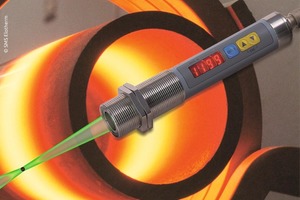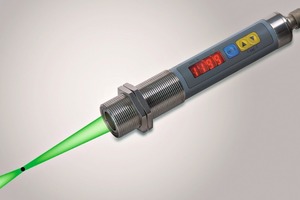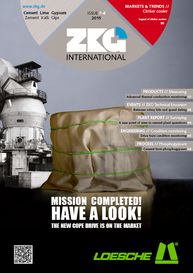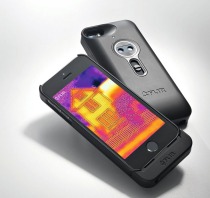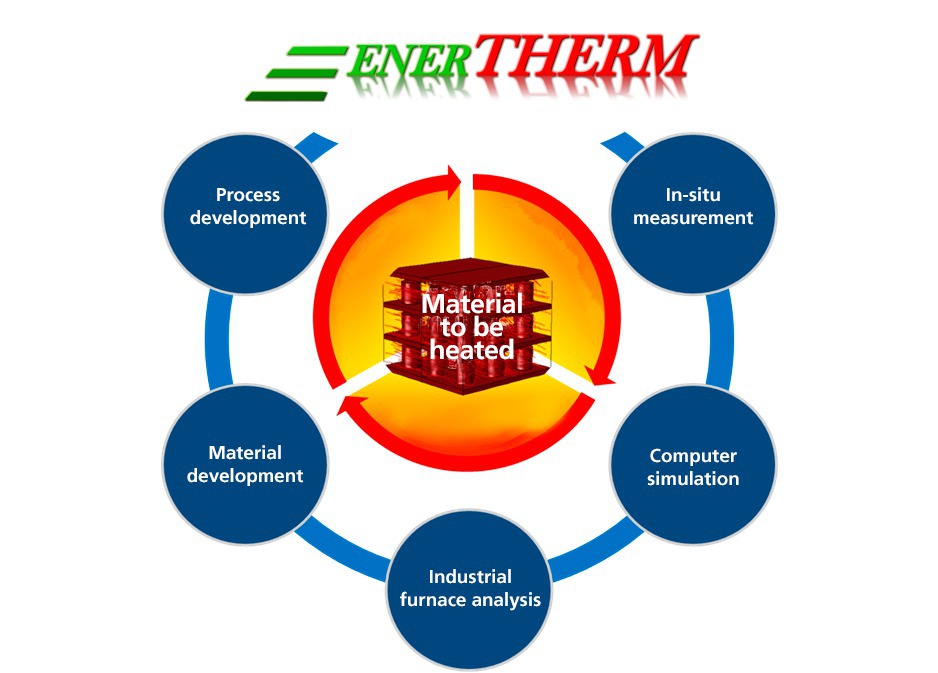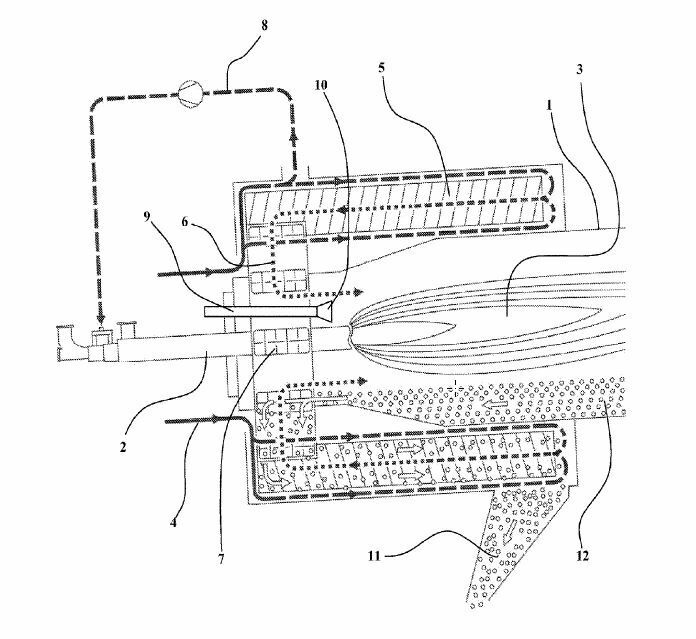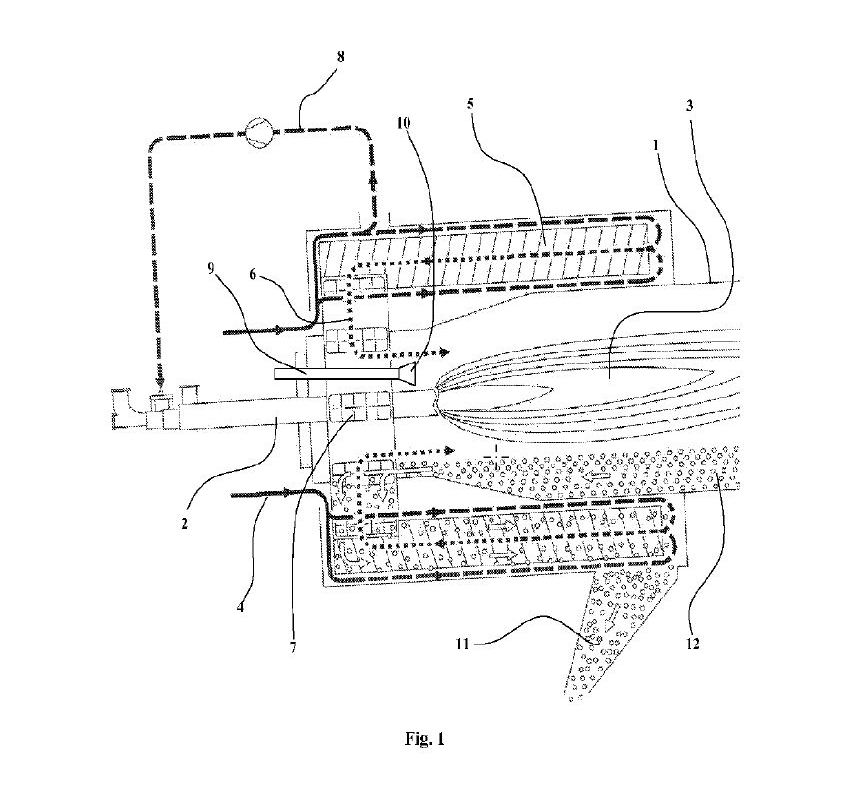Compact two-colour pyrometer with display and keyboard
1 Introduction
Unlike conventional spectral pyrometers, modern two-colour pyrometers register not only one wavelength of infrared thermal radiation for non-contact measurement of temperature, but instead two wavelength ranges simultaneously and at the same point. The quotient of the two radiation densities measured is then generated. The latter varies approximately proportionally to temperature
(Tq ≈ e1 x øl1 ).
e2 x øl2
The special feature – and great advantage – of the two-colour pyrometer is the fact that the temperature reading remains constant even if the infrared radiation emitted by the target object is attenuated by dust, fumes or fouled sighting glasses, for example. The correct temperature is still read even in case of a 90 % signal attenuation. Two-colour pyrometers are therefore used primarily for industrial applications involving extreme ambient and measuring conditions – on rotary kilns in the cement industry, for example, on rolling lines in the steel industry, and for measurement of molten metal in foundries. Even a change in the radiation properties of the target object – emissivity «, for example – has no influence on the temperature reading, since such changes do not affect wavelength.
A further advantage of this measuring principle is the fact that the target object can also be smaller than the instrument’s measuring point. A two-colour pyrometer is therefore less directionally and distance-sensitive in measurement of smaller target objects, in inductive heating systems, for example. Another application in which two-colour pyrometers supply more accurate readings is that of measurement of the temperature of droplets or flows of glass. Thanks to the special features of this measuring method, the grade of glass, its colour, and the diameter of the droplet do not influence the measuring signal. Fluctuating production conditions can result in unsteady temperature readings when a spectral pyrometer is used.
Modern two-colour pyrometers feature an integrated Smart Contamination Monitoring (SCM) function. A warning signal is tripped in case of very severe fouling of the sight glass or of the pyrometer lens, or in case of high dust and/or steam/fume concentrations in the line of sight to the target object. This assures high operational reliability, and also saves costs, by eliminating the need for regular maintenance and visual inspection by the service personnel.
Two-colour pyrometers make it possible to evaluate not only the two-colour temperature but also the spectral temperature readings. The instrument can, in effect, be used as a “double”, i.e., a two-colour or a spectral, pyrometer. This opens up extremely interesting potentials for signal evaluation, in order, for example, to investigate the radiation properties of target objects.
2 New PK series
Due to the registration and evaluation of three temperature readings, the two-colour pyrometer’s hardware and computing needs are significantly higher than those of single-channel pyrometers. There have in the past therefore simply been limits on the miniaturisation of two-colour pyrometers. The CellaTemp PK series of pyrometers from Keller in Ibbenbüren/Germany has now achieved conversion of the electronics to innovative high-performance processors and, simultaneously, miniaturisation of the components. Complex converters and I/O modules possess new functionalities which, for the first time, make it possible to implement a two-colour pyrometer in such a compact form. Thanks to its great ease of installation, the housing with its central M30 thread is widely used and extremely popular on the sensor market.
In addition to the temperature measured, the display also shows warning and error messages in case, for example, of incorrect connection or impermissible operating conditions.
The keyboard can be used to select the extensive configuration options and functions directly on the instrument. The Service function is extremely useful at commissioning. Simulation of a temperature makes it possible to check the correct functioning and scaling of the pyrometer, and also the instruments connected to the analog output or switching output, even without a target object. Signal strength is displayed in Service mode, and the instrument set to the maximum reading, to permit checking of the optimum orientation of the instrument onto a hot target object.
The new two-colour pyrometer is available without (CellaTemp PK 68) or with (CellaTemp PKL 68) integrated LED spot light. The special feature of this patented spot light is the fact that it displays both the exact position and the true size of the measuring point. Lower-cost pyrometers with a laser sighting system incur parallax – i.e., the laser and the measuring point are displaced in parallel and are not on the same optical axis. In simple instruments, the laser spot serves only as a rough aid to orientation, and also does not show the true size of the measuring point.
The LED spot light, which presents no safety risks, is continuously illuminated. Its green light is that to which the human eye is most sensitive, with the result that the light spot is brighter and better defined than a red LED would be. It permits a high level of operational reliability, thanks to the permanent facility for checking. Service-life, which is extremely limited in the case of lasers, is non-critical in LEDs. In addition, laser intensity declines when the ambient temperature rises, limiting the service range of such instruments to 50 °C.
All variants of the CellaTemp PK series can be used without cooling up to a temperature of 65 °C. The version with built-in spot light is available for focal lengths of 210 mm and 1000 mm. Focal length in the model with no spot light is 1500 mm. The measuring ranges from 550 °C (600 °C with spot light) to 1600 °C.
In addition to its analog output, the CellaTemp PK(L) 68 also features two switching outputs which permit a large range of configurations and combinations. In inductive billet heating, for example, excessively cool and excessively hot billets can thus be directly extracted from the product flow separately from each other. The pyrometer is connected by means of a standardised cable with an M12 plug connector.
The series of instruments is rounded off by an extremely extensive range of mechanical accessories, such as mounting brackets, an axial air purge nozzle, cooling jackets, quartz window attachments, an insulating flange, a dust stop, a ball-mounting flange and various mounting combinations, all of which make it possible to operate these instruments reliably in the many potential applications.
//www.keller-msr.de" target="_blank" >www.keller-msr.de:www.keller-msr.de

